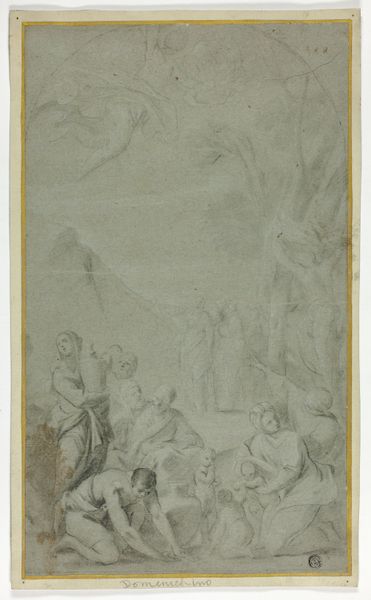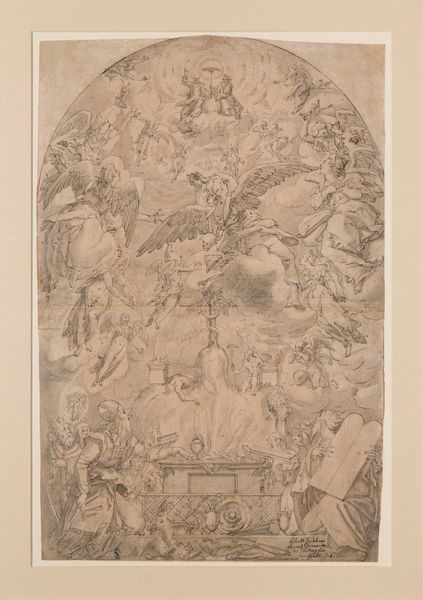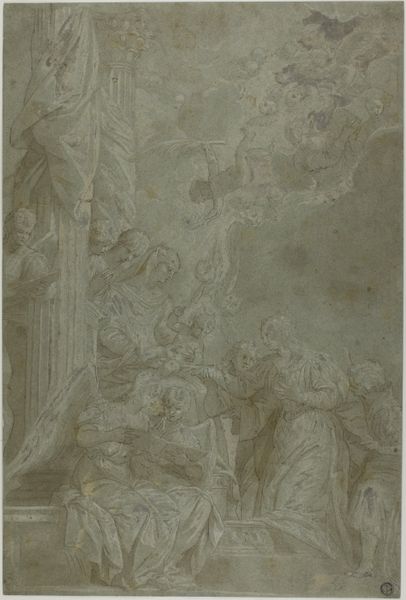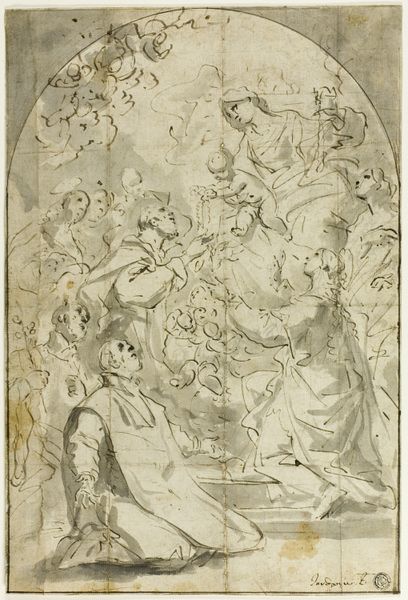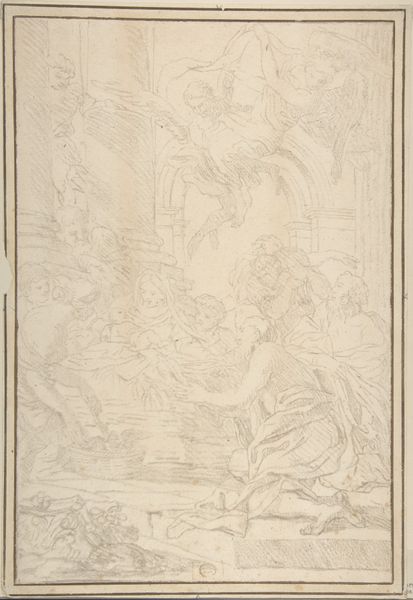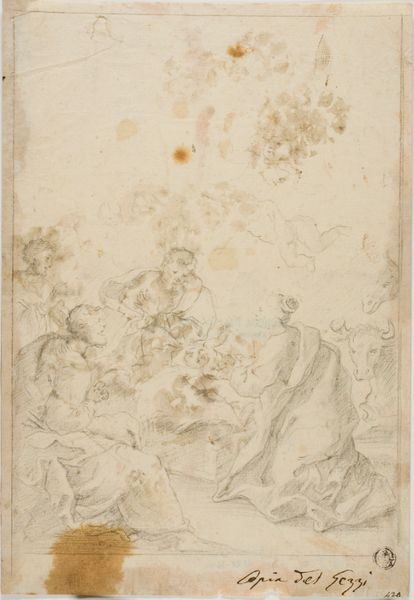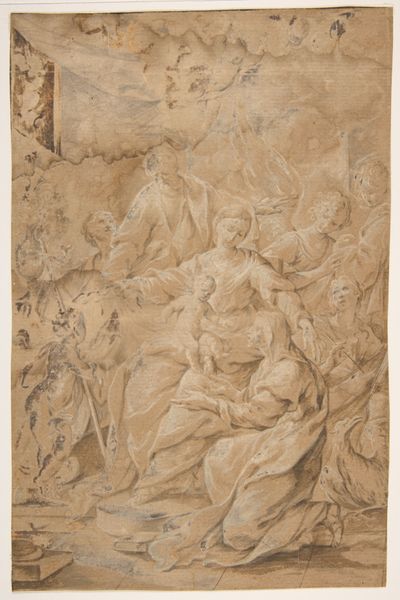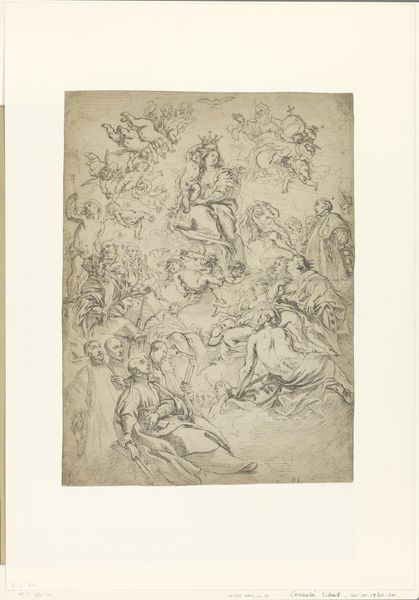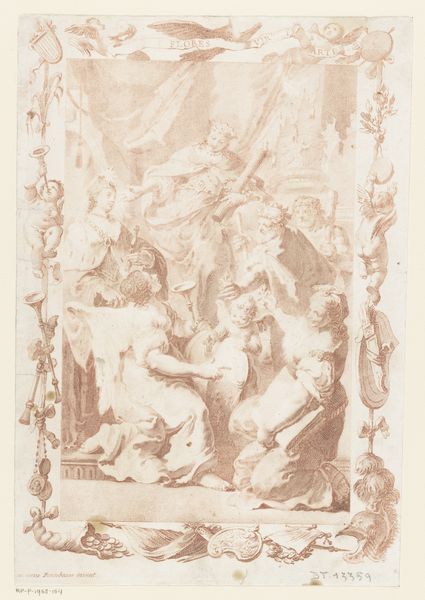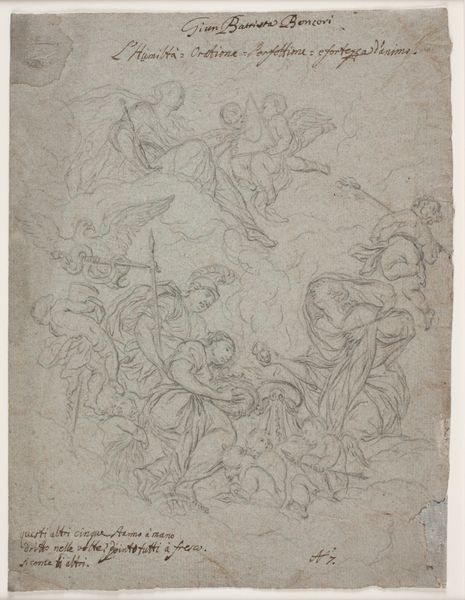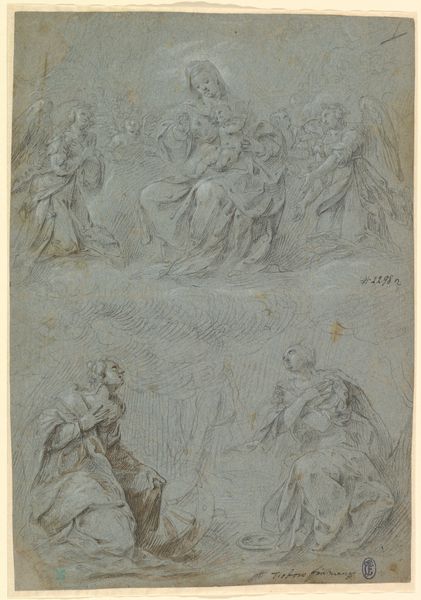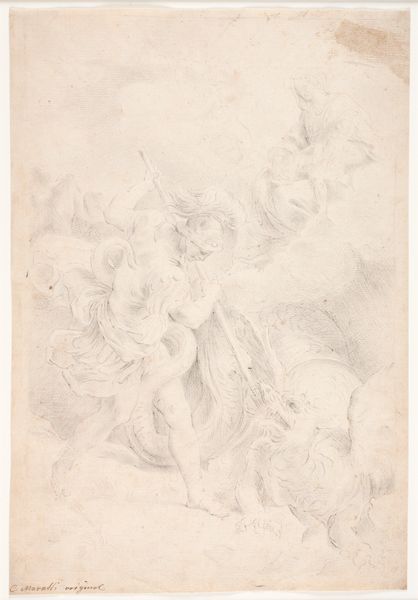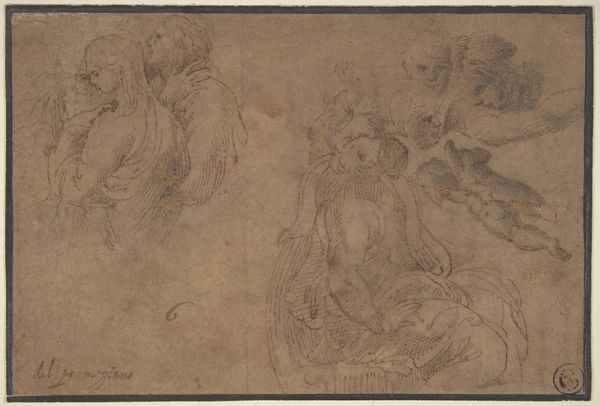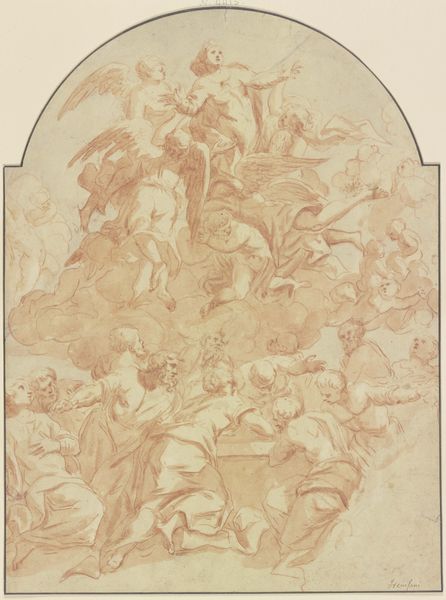
Sølvalderen. Studie efter Pietro da Cortonas komposition i Sala della Stuffa, Palazzo Pitti, Firenze 1671 - 1738
0:00
0:00
drawing, ink, pencil, pen
#
drawing
#
baroque
#
ink painting
#
figuration
#
ink
#
pencil
#
pen
#
history-painting
#
watercolor
Dimensions: 416 mm (height) x 322 mm (width) (bladmaal)
Curator: This delicate drawing is by Hendrik Krock, entitled "Sølvalderen. Studie efter Pietro da Cortonas komposition i Sala della Stuffa, Palazzo Pitti, Firenze". Executed between 1671 and 1738 with pen, pencil and ink, it resides here at the SMK, Statens Museum for Kunst. What are your first impressions? Editor: It feels ethereal. Almost like a dream fading at the edges. The monochrome palette softens the mythological subject matter, lending it a kind of timelessness. There is almost a reluctance for the viewer to see it with such pale ink, as if these forms, characters and symbols belong to those in the know and not common society. Curator: It's fascinating you pick up on the exclusivity. Consider that Krock was indeed making a study after Pietro da Cortona’s fresco. This practice served not only for technical skill-building but also for establishing an artist's pedigree. To understand that the drawing comes after this specific fresco in Palazzo Pitti opens doors into a world of artistic appropriation, patronage and power. Editor: Yes, and Krock would be making a name for himself in this exercise, cementing the idea that there are master narratives at play which should continue across generations and colonial endeavors. I see how the art world continually canonises, and recanonises, similar types of people. Curator: Absolutely. Krock's choice of medium adds another layer. Drawings were often considered preparatory—not fully "finished" works of art. What we see could be viewed as an intimate glimpse into the artist’s process. A tool of institutional artistic learning which eventually translates into public showmanship of fresco and history paintings. Editor: I agree that this technique could offer a more radical interpretation than simply agreeing to copying for purposes of learning and indoctrination. The lack of bold color subverts some of the original’s inherent propaganda. Yet I think that either way, we cannot ignore the historical baggage present and question which social classes it excludes. Curator: This drawing lets us peek behind the curtain, doesn’t it? We get to glimpse the systems through which art history is shaped. Editor: Exactly. It invites us to not only appreciate the artistic skill, but question the broader narratives they reinforce—or, perhaps, challenge. It shows the history that has formed in art through time, so it asks who has the most authority to dictate art history?
Comments
No comments
Be the first to comment and join the conversation on the ultimate creative platform.
